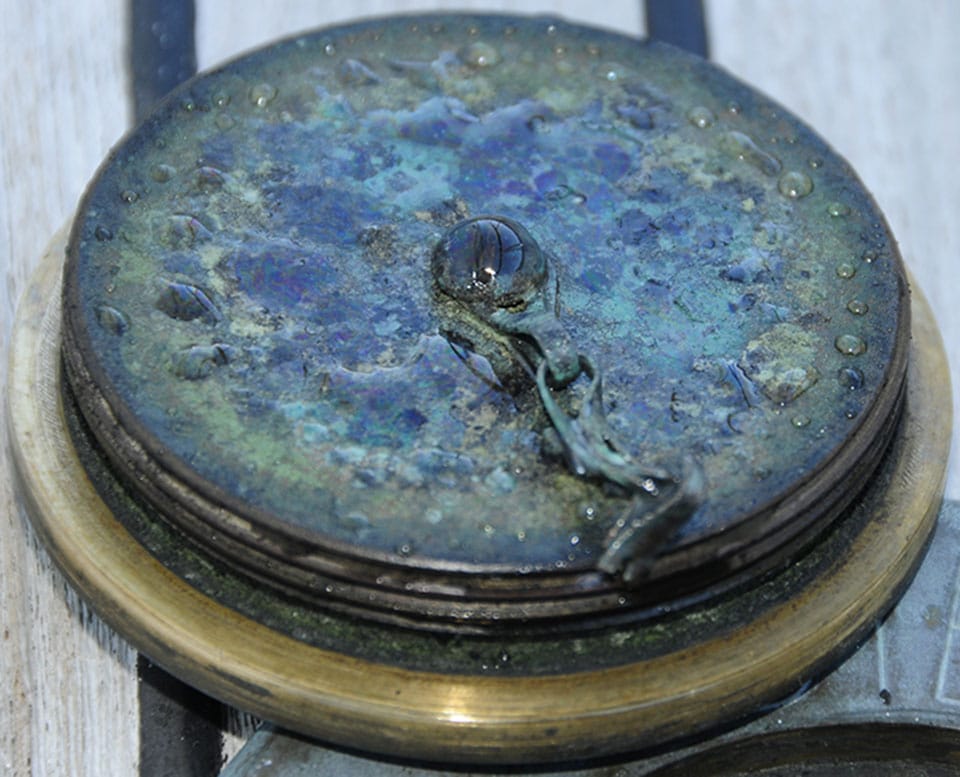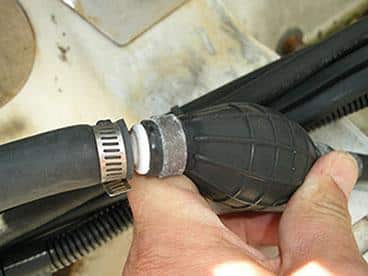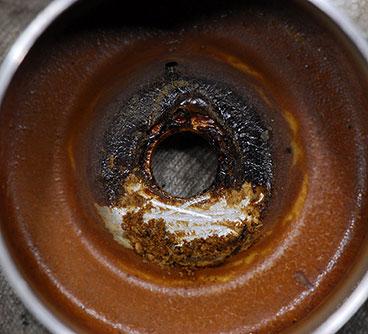
Water, Water Everywhere
When ethanol-laced gasoline, or E10—a blend of 90 percent gas and 10 percent ethanol—was first introduced for widespread use in the northeastern part of the United States, the ill effects were immediate. Engines sputtered, stalled, and failed, fuel lines cracked and deteriorated, and fiberglass fuel tanks disintegrated.
When mixed with gasoline, ethanol is an oxygenator and pollution inhibitor that slightly reduces fuel economy. It took the place of a previous additive that filled the same role and worked well, with one exception: It was a ground-water contaminant. But ethanol, also called gasohol, introduced a steep learning curve for boat owners. It can have a powerful, solvent-like effect on a variety of surfaces, especially those of hoses, gaskets, and fiberglass tanks. It also scours tanks, carburetors, and fuel-injection systems, removing deposits but clogging jets, orifices, and filters.
Furthermore, the ethanol in E10 can hold a significant quantity of water in suspension, up to a point. When it reaches its threshold, in a process known as phase separation, the water/alcohol cocktail drops out of suspension. The sludge-like mess that then accumulates on the tank bottom can lead to numerous problems for any engine that ingests the mix. And if the fuel tank is metallic, such as aluminum, this water-rich solution exacerbates corrosion.

__
_2. Ethanol is hard on plastic and rubber components, including fuel hoses and primer bulbs.
_
As one might expect, E10 is the source of much talk and concern. Here’s one myth-busting fact: Contrary to popular belief, while E10 is hydrophilic, it holds water but doesn’t readily absorb it from the air.
The good news is E10 has now been around long enough for engine manufacturers, boatbuilders, and additive producers to address its problems—to a degree. For any gasoline-powered engine, it’s important to make sure that the motor is suited for E10 operation, especially with regard to the fuel system’s hoses and gaskets.
For example, if you have an outboard—particularly an older model—and its E10 suitability isn’t clearly established in the manual, contact a dealer or the engine manufacturer for guidance. If you have an otherwise durable and long-lasting fiberglass fuel tank, you’d be foolish to continue using it with E10. Ethanol will disassemble the tank’s structure, molecule by molecule. When the dissolved resin makes its way into a hot engine, it will solidify, seizing valves and clogging carburetors and fuel-injection systems. This damage is nearly always irreversible.

3. Ethanol-induced deposits inside this carburetor bowl, and on floats and jets, led to rough idling, stalling, and eventually to an engine that wouldn’t run.
How best to avoid being haunted by the E10 demon? When it’s available, use non-ethanol fuel. Add a stabilizer to E10 gasoline at each and every fill-up, especially if the fuel won’t be used within 30 days. Ensure that all hoses are approved for use with ethanol; appropriate supply hoses are marked “USCG A1-15,” and appropriate fill and vent hoses are marked “A2 FIRE ACOL.”
If your boat lacks a UL Marine-approved gasoline-rated fuel filter, install one. While this won’t remove water that’s held in suspension (which, for the most part, is harmless in small quantities), it will catch debris dislodged by E10 use (and it’s always desirable to remove “free” water). Finally, avoid higher concentrations of ethanol, such as E15. Virtually no marine engines are approved for its use.
Steve D’Antonio offers services for boat owners and buyers through Steve D’Antonio Marine Consulting (www.stevedmarine consulting.com).








